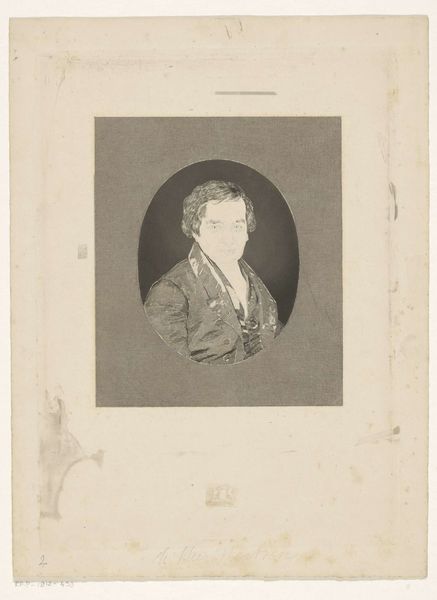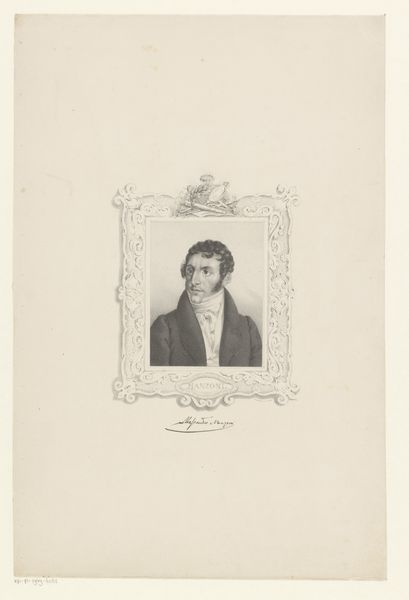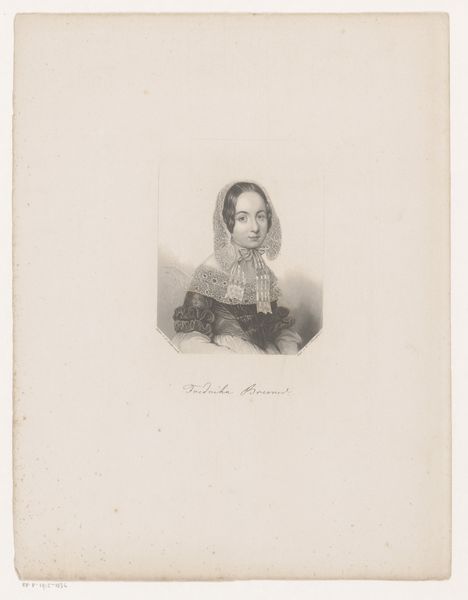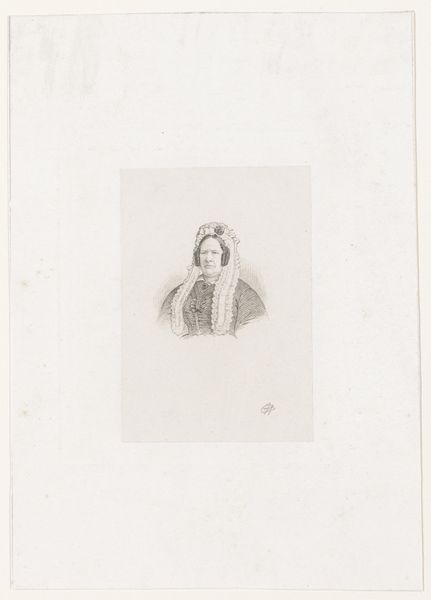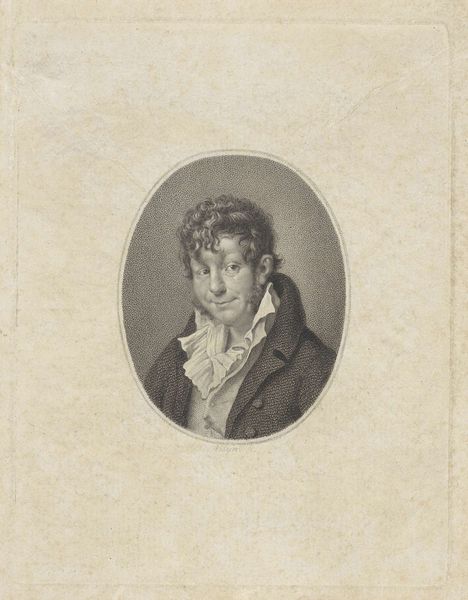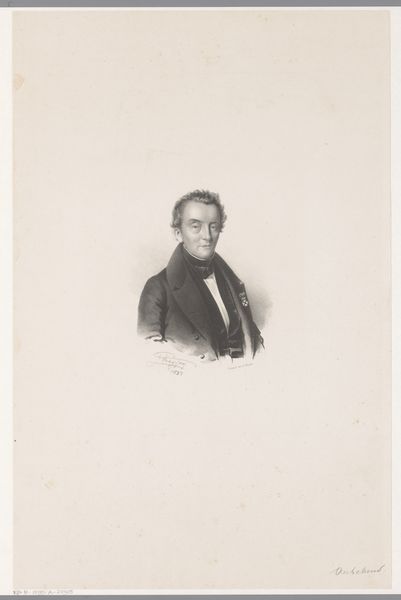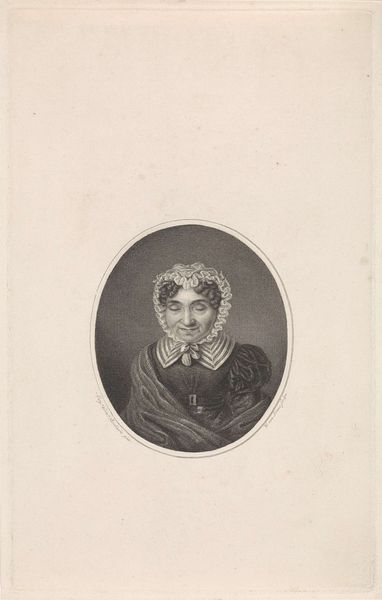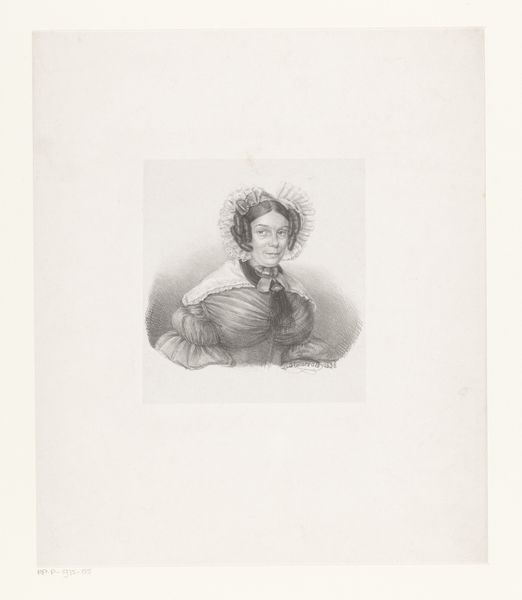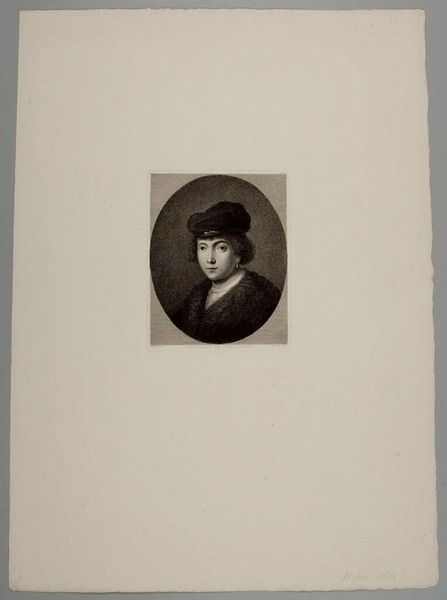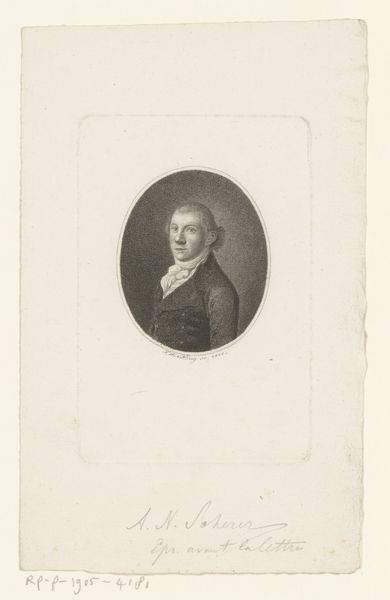
Pages historiques de toutes les Nations composées et lithographiées. 12 stuks 1811 - 1866
0:00
0:00
victoradam
Rijksmuseum
print, engraving
#
portrait
#
pencil drawn
# print
#
pencil sketch
#
old engraving style
#
pencil drawing
#
portrait drawing
#
engraving
#
realism
Dimensions: height mm, width mm
Copyright: Rijks Museum: Open Domain
Curator: Looking at this portrait, I find myself drawn into a quiet solemnity. The lines are so delicate. Editor: Indeed. This engraving is part of a larger series entitled "Pages historiques de toutes les Nations," dating from 1811 to 1866, by Victor Adam. It’s interesting to see how printmaking allowed for the democratization of portraiture during this period. These images could be disseminated widely, shaping public perceptions of important figures. Curator: You’re right; printmaking definitely made it accessible. And that uniform hatching outside the oval, it is so uniform and contrasts interestingly with the sitter’s very softly shaded face. It almost feels like a screen, isolating the figure. Editor: Precisely. Notice the layering of the engraving lines within the portrait itself. See how Adam uses varied densities to model the face and the clothes? The texture of his jacket and scarf are rendered beautifully. Curator: What's striking, historically speaking, is the relative lack of overt symbolism. The focus is on the individual. In the early 19th century, there's a move away from allegorical portrayals of people and towards a straightforward recording of likeness. Editor: Although I do sense some careful tailoring. The pose is considered, directing your attention to his eyes and overall gaze. It subtly encourages empathy and hints at intellect. Curator: That reminds me of how these kinds of images were used as a tool for nation-building and solidarity. Circulating portraits of leaders and thinkers fosters a sense of shared identity. Printmaking was used as propaganda. Editor: True. I focused more on the technique than the political implications. Curator: I appreciate you focusing on the visual; it’s easy to get lost in historical interpretation! Editor: Thank you, I equally feel more enriched knowing of this artwork's significance to shaping the public images.
Comments
No comments
Be the first to comment and join the conversation on the ultimate creative platform.
